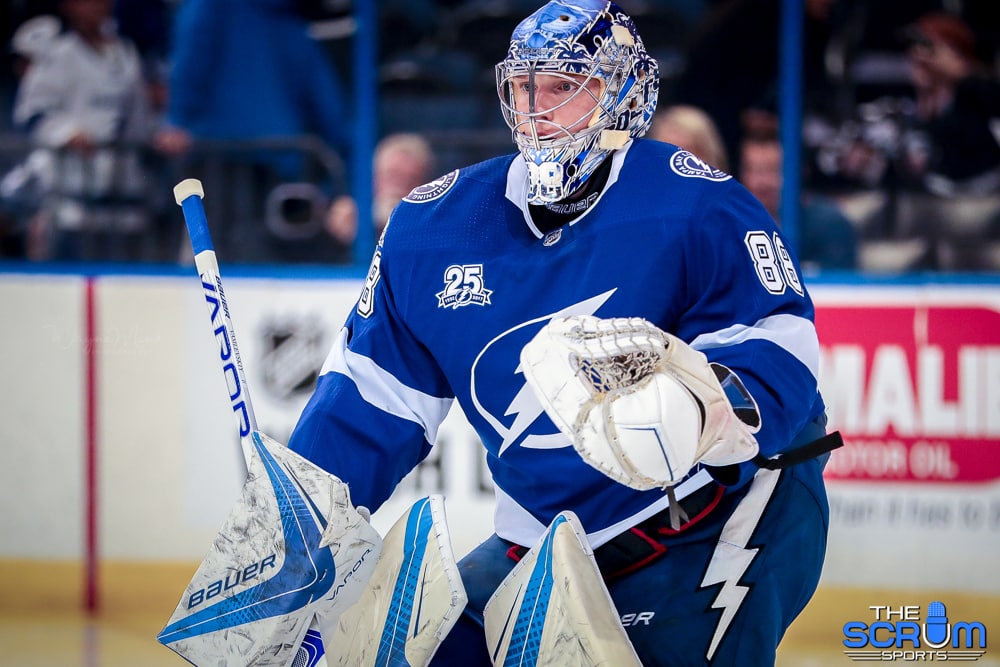
Consistency in net has been an on-and-off issue for the Tampa Bay Lightning since the moment they hit the ice. When Wendell Young stepped into the crease for the first game in Bolts history on October 7, 1992, it started a roller-coaster ride between the pipes for the Lightning.
Young would stop 23 of 26 shots in a 7-3 drubbing of the Chicago Blackhawks. Promising, right? Wrong. Young would start just 31 games that inaugural 1992-93 campaign, posting a 3.66 goals-against average and an .872 save percentage. His GAA was tied for the second-worst on the team among the three goalies who started at least 20 games for the Lightning that season. The point? Over the years, consistency in the crease has been an issue for the Bolts at times. However, when they find it? You’d better look out. Before we get to everyone’s favorite duo of Lightning tenders, it’s time to examine how success in the crease has been synonymous with success in the win/loss category throughout the team’s history.
Master Puppa
As mentioned, the Lightning’s first season was a rough one in net, with three goalies in the 20+ game category. They would finish a measly 23-54-7, missing the postseason. Their primary struggle was keeping the puck out of their net, as they had the fifth-worst goals-against average in the league. The following campaign? Enter Daren Puppa.
Puppa drastically improved the Bolts immediately, lifting their record to 30-43-11 in ’93-94. By the ’95-96 season, Puppa started more than fifty games and led the Lightning to their first winning season, at 38-32-12. By this point, their goals-against ranking was nearly top ten, slotting in at number eleven in a 26 team league. While Puppa never won a cup with the Bolts, he took a squad ranked 18th in goals-for to its first playoff appearance that season, and was the first real capable goaltender to don a Lightning crest.
Revolving door
The following season would be the start of a troubling trend for Tampa. Thanks to injuries, Puppa started just six games, and the goals-against fell back down to a rank of 16 behind 55 Rick Tabaracci starts. Puppa was still around, but started 26 games in ’97-98. This time it was Mark Fitzpatrick who led the charge, playing 34 games. That season, the Lightning were like a kid in a candy store, but in the sense that they couldn’t make up their minds. They had four goalies with ten-plus starts.
That statistic would become an unfortunate theme for the Bolts in the late nineties. They had at least three goalies notching ten or more starts a season for the last three years of the twentieth century. The result? One seventh place finish in the Atlantic Division and two fourth place finishes in the Southeast. The underlying theme? Consistency in the crease was evasive for the Lightning, and its elusiveness robbed the Bolts of success for years. Of course, goal scoring was an issue in this period as well, but as Puppa was evidence, subpar offensive output can be overcome in goal.
Two years later? The best goals-against average the team had ever seen in twenty-plus starts, and the dawn of a new era of Lightning hockey.

